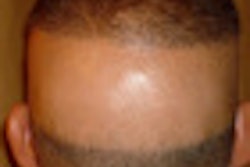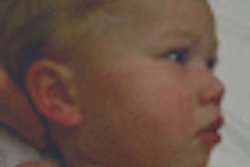Body diameter measurements, not age, should be the criteria to determine optimal radiation exposure factors for children having CT exams, according to recent research conducted by pediatric radiologists and medical physicists from Children's Hospital Boston.
Children of the same age have a wide variety of body shapes and sizes, and for this reason, radiologic technologists should measure each child prior to performing a CT scan. Dr. Patricia Kleinman, a pediatric radiologist, described a project undertaken by the hospital's radiology department to measure patient size on CT images as a function of age for more than 1,000 patients to attendees at the Society for Pediatric Radiology (SPR) annual meeting held in Boston in April. Additional details were published in the June issue of the American Journal of Roentgenology (2010, Vol. 194:6, pp. 1611-1617).
Kleinman and colleagues reviewed the CT exams of 544 boys and 465 girls performed at Children's Hospital Boston between June and November 2007. The children ranged in age from birth to 21 years. Patients with diseases that could affect body measurements, such as scoliosis, cranial thickening, and hydrocephalus, were excluded.
From the patients, 336 examinations of the head, thorax, abdomen, and pelvis were selected. From these, 2,688 measurements were made, which were separated into 21 groups. After determining that there were no significant differences by anatomic region between male and female sexes, the data from each group were combined.
"We discovered a broad overlap of predicted patient size ranges as a function of age within each anatomic range," Kleinman said. "For a 20-year-old patient, the smallest predicted thoracic size overlapped with the largest size of a 7-year-old, the pelvic size overlapped with a 6-year-old, and the abdominal size overlapped with a 3-year-old."
Rapid growth of the head occurred from birth to approximately 2 years of age, followed by a gradual plateau until adulthood, Kleinman reported. She also noted that the largest predicted head size of a 2-year-old overlapped with the smallest predicted head size of a 20-year-old.
Kleinman cautioned that "reliance on age alone could lead to inappropriate selection of technical factors for a variety of imaging studies, resulting in over- or underexposure to individual pediatric patients." She recommended that calipers be used to measure pediatric body dimensions for each patient.
By Cynthia Keen
AuntMinnie.com staff writer
May 25, 2010
Related Reading
Color-coded CT protocols help reduce pediatric radiation dose, June 4, 2009
SPR news: Rads must take lead in reducing pediatric CT dose, April 23, 2009
ARRS study: Child's body shape can reduce CT dose, April 23, 2009
Copyright © 2010 AuntMinnie.com



















